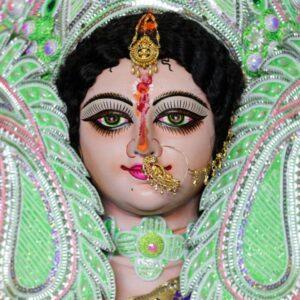Understanding the geographical context of the Ramayana, one of India’s greatest epics, is crucial for appreciating its narrative and cultural significance. This blog post delves into the specific locations mentioned in the Ramayana, focusing on Ayodhya and Lanka. We’ll explore these regions, their historical and cultural contexts, and their influence on the epic’s storyline.
Ayodhya: The Birthplace of Lord Rama
Located in Uttar Pradesh, Ayodhya is revered as the birthplace of Lord Rama and holds immense religious significance for Hindus.
- Ancient History and Archaeological Findings: Ayodhya finds mention in various scriptures and historical texts, highlighting its prominence. Archaeological excavations have unearthed evidence supporting Ayodhya’s historical importance, revealing layers of ancient civilizations and structures.
- Cultural Practices and Ramayana Description: Ayodhya is home to major temples and festivals like Ram Navami, central to Hindu culture. The Ramayana depicts Ayodhya as a magnificent and prosperous city during Lord Rama’s reign, reflecting its historical and spiritual significance.
- Narrative Role and Modern-Day Significance: Key events in the Ramayana, such as Lord Rama’s exile and triumphant return, are set in Ayodhya, solidifying its place in the narrative. Recent developments and discussions continue to keep Ayodhya in the spotlight, highlighting its enduring relevance.
- Artistic Depictions: Ayodhya has been portrayed in various art forms, including literature, paintings, and cinema, showcasing its cultural impact and inspiring artistic interpretations.
The Journey from Ayodhya to Lanka
The journey from Ayodhya to Lanka forms the core of the Ramayana. This section explores the various locations mentioned in the epic.
- Exile Path and Dandakaranya Forest: Lord Rama’s exile takes him through significant locations like Chitrakoot, Dandakaranya, and Panchavati. Dandakaranya, known for its association with sages and hermitages, plays a crucial role in Rama’s spiritual journey.
- Kishkindha and Pampa Lake: Kishkindha, the kingdom of the Vanaras (monkey warriors), becomes a crucial ally for Rama. Pampa Lake is significant as the meeting place of Rama and Hanuman, marking a turning point in the narrative.
- Rama Setu (Adam’s Bridge) and Geographical Features: The construction of Rama Setu, a bridge connecting India and Lanka, holds historical and mythological importance. Rivers, forests, and mountains featured in the journey contribute to the narrative’s richness and symbolism.
- Cultural Significance: These locations are not mere geographical points but contribute to the overall themes of the Ramayana, highlighting the importance of dharma, devotion, and perseverance.
Lanka: The Kingdom of Ravana
Lanka, ruled by the demon king Ravana, is central to the Ramayana’s narrative. Traditionally identified with modern-day Sri Lanka, Lanka’s geographical and cultural aspects are deeply intertwined with the epic.
- Lanka’s Location and Architectural Marvels: Lanka’s strategic position in the Indian Ocean has made it a significant cultural and trade hub. The Ramayana describes Lanka as a city of exceptional beauty and prosperity under Ravana’s rule, with magnificent palaces and advanced infrastructure.
- Key Events in Lanka and Cultural/Historical Perspectives: Sita’s abduction, Hanuman’s visit, and the final battle between Rama and Ravana are pivotal events that unfold in Lanka. The city’s portrayal reflects ancient societal values, contrasting opulence with moral corruption.
- Archaeological Evidence and Symbolic Representation: Excavations in Sri Lanka have revealed evidence of sophisticated ancient civilizations, resonating with the Ramayana’s descriptions. Lanka symbolizes challenges and adversities, with the battle representing the eternal fight between good and evil.
- Modern-Day Significance: Sites in Sri Lanka associated with the Ramayana, like Ashok Vatika and the ruins believed to be Ravana’s palace, continue to hold cultural and religious importance, attracting pilgrims and tourists.
Ayodhya and Lanka: Ramayana Geography Explained
Here are some frequently asked questions about the geography of the Ramayana:
Ayodhya is located in Uttar Pradesh, India, on the banks of the Sarayu River. It is revered as Lord Rama’s birthplace and the capital of his kingdom.
Lanka, often identified with modern-day Sri Lanka, is the island nation south of India.
The Ramayana describes a long and arduous journey between Ayodhya and Lanka, involving both land and sea travel.
Besides Ayodhya and Lanka, key locations include Kishkindha and Mithila.
Adam’s Bridge or Rama’s Bridge, a chain of limestone shoals, connects India and Sri Lanka.
Ayodhya is accessible by road and rail, with the nearest airport in Lucknow.
Poojn.in: Connecting You with the Ramayana’s Sacred Geography
Poojn.in offers authentic puja items and religious artifacts to deepen your spiritual connection with the Ramayana’s sacred sites:
- Ram Darbar Idols: Bring the divine presence of Ayodhya into your home with beautiful idols of Lord Ram, Sita, Lakshman, and Hanuman. Browse our collection.
- Hanuman Chalisa and Religious Texts: Delve deeper into the epic journey from Ayodhya to Lanka with sacred texts. Explore our selection of religious books.
- Puja Thalis and Accessories: Enhance your Ram bhakti with traditional puja items. Find everything you need for your puja rituals.
- Pure Copper Items: Connect with ancient Vedic practices using traditional copper vessels. Discover our range of copper items.
Conclusion
Lanka’s role in the Ramayana is crucial, highlighting the epic themes of good versus evil and the importance of righteousness. Exploring Lanka’s geographical and cultural history enriches our understanding of the Ramayana’s timeless wisdom and connects us to our rich heritage. May this exploration inspire us on our own journeys.

